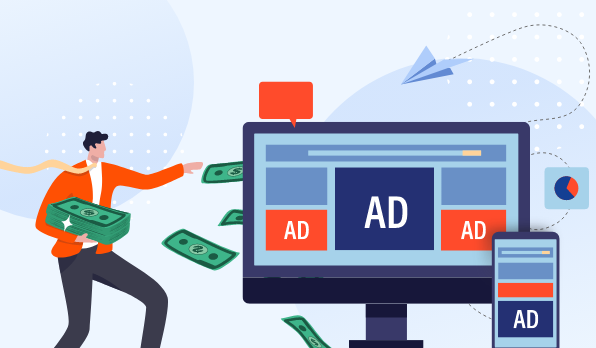
Digital Marketing comprises initiatives for new customer acquisition and existing customer retention. New customer acquisition is made using paid media, searches, and content marketing. A lot of it happens via Adtech platforms like Google and Meta, through performance marketing, where brands pay per click or per conversion action. Existing customer retention strategies include email marketing, in-app recommendations, and customer support through push messages (email notifications, WhatsApp, SMS, etc.) and brand properties (websites and apps).
Push messages are essential to building stronger relationships. They bring customers back to the properties by leveraging Martech capabilities like unified customer view, journey orchestration, search, and omnichannel personalization.
As there is a lot of focus on acquiring new customers, building deeper relations with existing customers has taken a back seat. It has created twin challenges in digital marketing – increasing business costs and decreasing customer loyalty.
Digital Marketing spending and discontents
Big Adtech’s success (Google and Meta’s combined revenues have tripled in the past 5 years – a CAGR of 25%) has made them tremendously powerful. For brands, this has meant escalating marketing budgets which have hit profitability. AdWaste probably accounts for half of the marketing spend on digital platforms – close to $200 billion.
This chart from The Economist shows where the money is being spent – $300 billion goes to the Google-Meta duopoly.
A large chunk of marketing revenue gets earmarked for Adtech; however, the return on investment is minimal. Finding answers to the below questions can solve most consumer-facing problems.
The above fall under three categories – rising CAC in digital ads, attention recession in push messages, and suboptimal experience on properties.
Rising CAC in digital ads
The competition to acquire new customers is immense. Acquisition and remarketing are the focus, with search and social as the primary spending channels. Brands look at Adtechs like Google and Meta for digital advertising and digital branding.
Digital branding expenditure is less than 1%, as opposed to 80-95% of the spending on Adtech. Big Adtechs have driven up their pricing rapidly owing to the increased demands and growing monopoly. It has resulted in brands diverting large amounts of revenue toward advertising budgets. This turn of events has led to AdWaste. Brands spend big dollars every year on digital marketing, but it does not translate to profits. Marketers pay for the clicks that have zero benefits. Half of the revenue spent for marketing on digital platforms is either for acquiring the wrong customer (the customer does not transact or uninstalls the app within a few days) or reacquiring a dormant customer.
Estimating AdWaste
Let’s segment customers into four groups based on their interaction with the brands – Left, Test, Rest, and Best. Let us take 100 acquired customers on whom a brand spends $1 each, making a total of $100. Of these 100 customers, let us assume half stay (the other half — Left customers — leave soon after acquisition/ can be attributed to click fraud), so the split is 50:50. Of the ones who stay, 20% can be considered the Best, 30%, Test, and the middle 50% is the Rest.
The most valuable customers here are the Best customers (20% of the ones who stay), who contribute to 60% of the revenue, which is 200% of the profits.
Let’s now take the other 50, and if we were to reacquire them, the value the brand derives is $48, which means the remaining $52 is wasted. To put it in perspective, more than 50% of the digital spending does not provide any value. This is AdWaste.
Across industries, this is a $200 billion problem – the elephant in the room which few marketers are willing to address.
Brands can disregard the Left customers. With the Best customers being the most loyal and Test customers mostly dormant, Rest customers can go on to become either the Best or the Test customer.
The economic value of the brand:
Attention recession in push messages
Brands have limited options to bring their customers back to their properties. While the most commonly used option is Push messages via email, SMS, and notifications, their visibility is low. Open rates are low for emails and SMS, and notifications get easily blocked. As for WhatsApp, its prohibitive costs (4 times of an SMS and 25-50 times that of an email) limits use cases.
Suboptimal experience on properties
How customers feel while engaging with a brand plays a significant role in attracting them to the brand. Most reasons why customers turn to other brands include negative experiences arising from:
One of the primary reasons for all of these is usually the unavailability of adequate customer data.
Closing thoughts
Brands must acknowledge that half of their digital spending is being wasted and should derive measures to prevent AdWaste. Here, a changed approach requires marketing to return to its roots and build better relationships with existing customers.
Brands need to enhance customer interaction using AMP mail hotlines, modified loyalty programs, and exclusivity in marketing. They can start by collecting volunteered data, enriching the customer profile, and increasing personalization. The endpoint would be huge improvements in retention, referrals, loyalty, and reactivation.
Based on the blog “Digital Marketing and its Discontents and Disruptions” by Rajesh Jain. He is the founder and Group MD of Netcore Cloud, a bootstrapped SaaS company that helps brands create outstanding AI-powered customer experiences at every touchpoint.

Leave a Reply